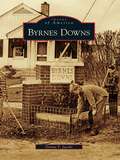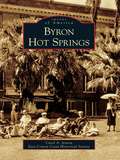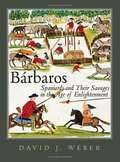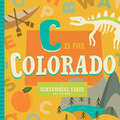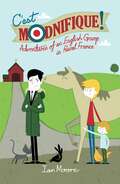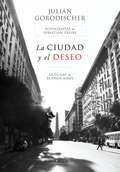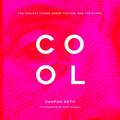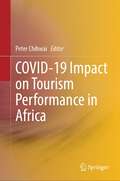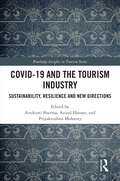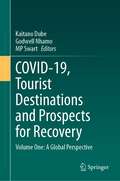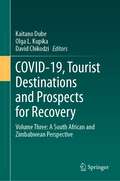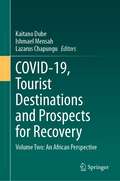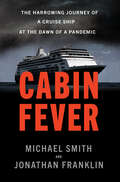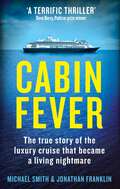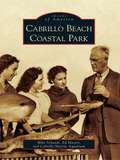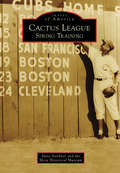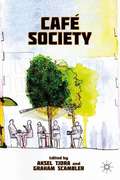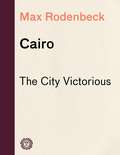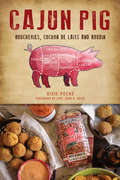- Table View
- List View
Byrnes Downs
by Donna F. JacobsLocated in the West Ashley area of Charleston, Byrnes Downs is a charming community designed and developed by the V-Housing Corporation in the 1940s. The Long Construction Company built this successful war-housing project of 360 houses that became the lifelong homes for many families. Early settlers who had made homes on the Charleston peninsula traveled west to develop the suburban neighborhoods of St. Andrew's Parish: Byrnes Downs, Albemarle Point, the Crescent, Moreland, Old Windermere, South Windermere, Wappoo Heights, and Westwood.
Byron Hot Springs
by East Contra Costa Historical Society Carol A. JensenByron Hot Springs is sometimes called the "Carlsbad of the West," after the famed European health spas. The resort hosted the famous, the wealthy, the infirm, and the curious alike during the early 20th century. The 160-acre property, in eastern Contra Costa County near the San Joaquin River, featured three grand hotels designed by renowned San Francisco architect James Reid. Amidst this stylish backdrop were prominent guests in 19th-century finery, early Hollywood royalty, Prohibition entertainments, mineral water "cures" for various ailments, and secret interrogations of World War II POWs (when it was known as "Camp Tracy"). Aside from the hot springs themselves, the resort boasts one of the oldest golf courses in the western United States.
Bárbaros: Spaniards and Their Savages in the Age of Enlightenment
by David J. WeberTwo centuries after Cortés and Pizarro seized the Aztec and Inca empires, Spain’s conquest of America remained unfinished. Indians retained control over most of the lands in Spain’s American empire. Mounted on horseback, savvy about European ways, and often possessing firearms, independent Indians continued to find new ways to resist subjugation by Spanish soldiers and conversion by Spanish missionaries. In this panoramic study, David J. Weber explains how late eighteenth century Spanish administrators tried to fashion a more enlightened policy toward the people they called bárbaros, or “savages.” Even Spain’s most powerful monarchs failed, however, to enforce a consistent, well-reasoned policy toward Indians. At one extreme, powerful independent Indians forced Spaniards to seek peace, acknowledge autonomous tribal governments, and recognize the existence of tribal lands, fulfilling the Crown’s oft-stated wish to use “gentle” means in dealing with Indians. At the other extreme the Crown abandoned its principles, authorizing bloody wars on Indians when Spanish officers believed they could defeat them. Power, says Weber, more than the power of ideas, determined how Spaniards treated “savages” in the Age of Enlightenment.
C Is for Colorado (ABC Regional Board Books)
by Stephanie Miles Christin FarleyA is for Aspen . . .B is for Big Horn Sheep . . .C is for Cliff Dwellings . . .With E for Estes Park, L is for Lark Bunting, and M for Million Dollar Highway, going from A to Z has never been more fun! Take an alphabetized field trip around the Centennial State and discover the plants, animals, foods, and places that make it, well, Colorado!
C'est Modnifique!: Adventures of an English Grump in Rural France
by Ian MooreAfter six years in the idyllic Loire Valley, comedian Ian Moore, his family and his growing menagerie feel like they’re on the cusp of the peace they hoped for. Their grand project, a writing school, is complete – only, nobody’s signed up. The Moores have their work cut out – but they’re determined to give it their best shot!
C'est Modnifique!: Adventures of an English Grump in Rural France
by Ian MooreAfter six years in the idyllic Loire Valley, comedian Ian Moore, his family and his growing menagerie feel like they’re on the cusp of the peace they hoped for. Their grand project, a writing school, is complete – only, nobody’s signed up. The Moores have their work cut out – but they’re determined to give it their best shot!
C'est la Vie: Adventures of an English Grump in Rural France
by Ian MooreFollow the misadventures of Ian Moore as he chronicles the charming and chaotic escapades of his family and their eccentric assembly of animals, on their continued search for serenity in rural France. With stresses, strains and animal poo mounting up, la famille Moore have their work cut out - but they're determined to give it their best shot!
CBAC TGAU Paratoi Bwyd a Maeth – Profion Ymarfer (WJEC Eduqas GCSE Food Preparation and Nutrition: Practice Tests)
by Jayne HillThis Practice Tests book is the perfect companion to both the Eduqas GCSE Food Preparation and Nutrition and WJEC GCSE Food and Nutrition Student Books and Revision Guides. It will help students familiarise themselves with the format of exam papers and build their confidence across the topics. // Provides questions across both Nutrition and Commodities topic areas, along with the answers and marking criteria, so that students can understand how marks are awarded // Includes a full exemplar exam paper, with graded answers, so students can see what makes a better answer and how to maximise marks in the exam // Gives helpful advice on revision planning and how to use different learning strategies // Tips, hints and advice throughout help students think about what the question is asking, help them avoid common pitfalls, and show them ways to maximise their grade // Keywords are highlighted throughout and defined in a glossary, so students can learn and apply correct terminology to best effect in their exam // Offers a detailed explanation of the main types of exam questions students will face in relation to each of the Assessment Objectives // Engaging, full-colour design and write-in format makes it very user-friendly and easy to use
CIUDAD Y EL DESEO, LA (EBOOK)
by Julian GorodischerBuenos Aires se ha convertido en una ciudad gay friendly. Esta guía poco tradicional traza un recorrido literario por los (no) lugares de la movida gay. La ciudad y el deseo cuenta qué sucede en esos espacios. Julián Gorodischer eligió la voz de un periodista joven, porteño, neurótico, para marcar este trayecto. Los bares, el shopping, las discos, las fiestas privadas, los gimnasios, los hoteles, las plazas, las milongas, los cines, las calles por donde desfilan los personajes marcan el espíritu de un tiempo y nos invitan a conocer el detrás de escena de aquello que pasa desapercibido para la mirada cotidiana. Las crónicas de este libro se pueden leer como una novela pero, sobre todo, como una guía íntima de Buenos Aires.
COOL: The Coolest Things Under the Sun. And the Stars.
by Swapan SethCOOL is a book of lists that mirror the author, Swapan Seth's eclectic taste across categories: from boltholes to exotic hideaways. It is a ready reckoner to the hip and the happening, of the known and the very unknown.
COVID-19 Impact on Tourism Performance in Africa
by Peter ChihwaiThis book examines the impact of the COVID-19 pandemic on tourism performance in Africa. It covers a wide range of topics that will interest academic readers and researchers, including the effects of COVID-19 on various segments of the tourism sector. The aim is to provide a deeper understanding of the damage caused by the pandemic, enriching future research based on the findings and conclusions presented in the book. The research presented in this book is new and original, representing different perspectives from across Africa's 52 countries. It offers valuable insights for the business world on how to adapt and adopt communication strategies during crises such as COVID-19. Themes such as innovation, service quality, and continuous improvement during the pandemic are explored, providing lessons that can benefit the tourism industry in navigating similar challenges in the future. Additionally, the book discusses the future of tourism, presenting various perspectives on what the future holds for the tourism industry. This provides an exciting platform for tourism stakeholders to learn about the future of the sector from diverse and knowledgeable angles. The unique perspectives offered, especially those from Africa, will appeal to a wide and diverse audience, including ecotourists, educational tourists, adventure tourists, governments, academics, and other stakeholders.
COVID-19 and the Tourism Industry: Sustainability, Resilience and New Directions (Routledge Insights in Tourism Series)
by Anukrati SharmaThis book offers international perspectives on the economic, social, geopolitical, and environmental implications of COVID-19 on tourism, an unprecedented situation for this sector. It considers the challenge of making the tourism industry more resilient to such crises and the future sustainability of tourism. Contributions explore the changing dimensions of tourism marketing post-COVID-19; the rising challenges in tourism education and ways to handle the crisis; the impact of the pandemic on tourism governance; and the emerging ethical issues of stakeholders’ responsibility. The book will be useful for researchers, students, and practitioners in the fields of tourism, geography, and crisis management disciplines.
COVID-19, Tourist Destinations and Prospects for Recovery: Volume One: A Global Perspective
by Godwell Nhamo Kaitano Dube Mp SwartThe COVID-19 pandemic had a devastating impact on tourist destinations in developing and developed countries. Though the entire globe was impacted, the short- and long-term implications for tourism as well as prospects for recovery vary across regions. This volume showcases research on the impact of COVID-19 on tourism from across the world. The book is divided into three parts, with the stage set by an introductory chapter that will provide a background and context. Part I contains chapters that explore the impact of COVID-19 on selected international tourist destinations. Part II showcases how various hotspots across the world adjusted to the new normal under pandemic conditions. Part III is a collection of chapters that address how various destinations are attempting to recover from the shocks of the COVID-19 pandemic. The concluding chapter, written by the editors, seeks to synthesize the lessons offered in the book and provide policy and practical implementation for the tourism industry and other important tourism stakeholders.
COVID-19, Tourist Destinations and Prospects for Recovery: Volume Three: A South African and Zimbabwean Perspective
by Kaitano Dube David Chikodzi Olga L. KupikaThere has been a segmented approach to documenting the impact of COVID-19 and recovery prospects for global tourism destinations. Until this volume, though, there has not been comprehensive, concentrated efforts to take a deep-dive look into two countries’ tourism destinations in order to provide a comparative perspective. This book fills this gap by analyzing tourism impacts and recovery prospects in both Zimbabwe and South Africa. The volume opens with an introductory chapter from the editors that provide context and background. Part I of the volume looks at the impacts of COVID-19 on Zimbabwe and South Africa, Part II focuses on tourism operations during the pandemic, and Part III focuses on tourism recovery initiatives and prospects. The concluding chapter from the editors provides practical and policy implementation. This book is the third and final component of a three-volume set on the impact of COVID-19 on destination tourism around the world.
COVID-19, Tourist Destinations and Prospects for Recovery: Volume Two: An African Perspective
by Kaitano Dube Lazarus Chapungu Ishmael MensahDespite the fact that the African tourism industry is prone to disturbances such as diseases, extreme weather events, civil unrest, wars, and other shocks, nothing could have prepared this destination for the devastating effect of the COVID-19 pandemic. In the absence of government or international agency budget support, the pandemic challenged the African tourism market to its core. The focus of this book is to assess the impact of the COVID-19 pandemic on the African tourism destination market as well as its prospects for recovery. A chapter written by the editorial team introduces the book. Following the introduction, the book offers chapters evaluating the pandemic's impact on African tourism. Chapters in the second part of the book discuss tourism recovery and how some destinations have survived the pandemic. The book concludes with a chapter providing policy recommendations and practical implementation advice. The book is part of a 3 volume series.
Cabell County
by James E. CastoEstablished in 1809, Cabell County is located in West Virginia's Mid-Ohio Valley. When rail tycoon Collis P. Huntington pushed the tracks of his Chesapeake & Ohio Railway across the mountains from Virginia into Cabell County, he founded the town that would become the county's great metropolitan center. Business and industry soon began to rise, and Cabell grew into one of the Mountain State's busiest, most populous regions. This dramatic history of Cabell County begins with the arrival of the area's first settlers and continues into the 21st century. Introduced are James Holderby, Peter Cline Buffington, John Hunt Oley, and the other venturesome souls who set in motion the forces that made Cabell County the thriving place it is today. An informative text and 200 vintage photographs recreate key historical events, including the day when the James Gang robbed the Bank of Huntington, the sagas of Barboursville and Milton, the early days of Marshall University and its spectacular growth and success, and the strange but true story behind the creation of Ritter Park. Readers also gain a feel for life in past eras as they witness the paddlewheelers that plied yesterday's Ohio River and the steam locomotives that chugged their way through the county's history.
Cabin Fever
by Nicola Stow Mandy SmithIn the tradition of Waiter Rant, a saucy look at life behind the beverage cartEver since Coffee, Tea or Me? was first published in the swinging sixties, the reading public has been enamored with stewardesses. In Cabin Fever, former Virgin Atlantic flight attendant Mandy Smith updates the genre, sharing the good, the bad, and the downright naughty about life in the air.Smith's jet-setting job took her to many exotic locations, and on the way she enjoyed plenty of steamy love affairs--even joining the Mile High Club. Whether she's performing CPR on a pilot mid-flight or sipping Manhattans in the Big Apple, Cabin Fever provides plenty of risqué in-flight entertainment!
Cabin Fever: The Harrowing Journey of a Cruise Ship at the Dawn of a Pandemic
by Jonathan Franklin Michael SmithThe true story of the Holland America cruise ship Zaandam, which set sail with a deadly and little-understood stowaway—COVID-19—days before the world shut down in March 2020. This riveting narrative thriller takes readers behind the scenes with passengers and crew who were caught unprepared for the deadly ordeal that lay ahead.In early 2020, the world was on edge. An ominous virus was spreading on different continents, and no one knew what the coming weeks would bring. Far from the hot spots, the cruise ship Zaandam, owned by Holland America, was preparing to sail from Buenos Aires, Argentina, loaded with 1,200 passengers—Americans, Europeans and South Americans, plus 600 crew. Most passengers were over the age of sixty-five. There was concern about the virus on the news, and it had already killed and sickened passengers on other Holland America ships. But that was oceans away, and escaping to sea at the ends of the earth for a few weeks seemed like it might be a good option. The cruise line had said the voyage (three weeks around the South American coastline to see some of the world&’s most stunning natural wonders and ancient ruins) would carry on as scheduled, with no refunds. And it would be safe.Among the travelers there is a retired American school superintendent on a dream vacation with his wife of fifty-six years, on a personal quest to see Machu Picchu. There is an Argentine psychologist taking this trip to celebrate her sixty-fourth birthday with her husband, though she finds herself fretting in her cabin on day one, trying to dismiss her fears of what she&’s hearing on the news. There is an Indonesian laundry manager who's been toiling on Holland America cruise ships for thirty years, sending his monthly paycheck to his family back home. Within days, people aboard Zaandam begin to fall sick. The world&’s ports shut down. Zaandam becomes a top story on the news and is denied safe harbor everywhere. With only two doctors aboard and few medical supplies to test for or treat COVID-19, and with dwindling food and water, the ship wanders the oceans on an unthinkable journey.
Cabin Fever: Trapped on board a cruise ship when the pandemic hit. A true story of heroism and survival at sea
by Jonathan Franklin Michael Smith'Gripping... The authors skillfully capture the fear and claustrophobia. A riveting real-life drama.' Kirkus'Cabin Fever is riveting, taut, and extensively researched. Smith and Franklin have written a page-turning adventure that will keep you reading late into the night.' Martin Dugard, #1 New York Times bestselling author of Taking Paris'A gripping account of how an invisible stowaway - the Covid-19 virus - transformed a fun-filled luxury cruise into an unimaginable nightmare.' Sara Gay Forden, bestselling author of House of Gucci'Extensive first-hand testimony and the authors' brisk, matter-of-fact style enrich this propulsive account of how a holiday cruise turned into a nightmare. Readers will be riveted.' - Publishers WeeklyIn early 2020, the world was on edge. An ominous virus was spreading and no one knew what the coming weeks would bring. Far from the hotspots, the cruise ship Zaandam was preparing to sail from Buenos Aires loaded with 1,200 passengers - British, American, Australian, European and South American tourists, plus 600 crew. Most passengers were over the age of 65.There was concern about the virus in the news but that was oceans away. Escaping to sea at the ends of the earth for a few weeks seemed like it might be a good option. The cruise line had said the voyage would go ahead as scheduled and it would be safe. Within days, people aboard the Zaandam began to fall sick. The world's ports shut down. Zaandam became a top story on the news and was denied safe harbour everywhere. With only two doctors aboard and few medical supplies to test for or treat Covid-19, and with dwindling food and water, the ship wandered the oceans on an unthinkable journey.Cabin Fever is a riveting narrative thriller, taking readers behind the scenes of the ship's complex workings, and below decks into the personal lives of passengers and crew who were caught unprepared for the deadly ordeal that lay ahead. It is a story layered with moments of peril, perseverance and kindness. A remarkable tale that is filled with individual acts of heroism and the struggles and the tragedies of the crew and passengers.
Cabrillo Beach Coastal Park (Images of America)
by Cabrillo Marine Aquarium Mike Schaadt Ed MastroLocated on the edge of one of the largest and busiest ports in the world, the Cabrillo Beach Coastal Park is comprised of several seashore habitats found in Southern California. All are within easy walking distance of each other near the main channel of the Port of Los Angeles. They include a windswept beach and a protected harbor beach separated by one of the largest breakwaters in the world, as well as tide pools, a fishing pier, a man-made mudflat, and coastal cliffs that provide living spaces for coastal marine organisms. The combination of natural and man-made habitats here bordering the San Pedro neighborhood of the huge metropolis of Los Angeles makes this an unusual environment, representative of an urban ocean.
Cactus League: Spring Training (Images of America)
by Mesa Historical Museum Susie StecknerArizona's baseball roots run long and deep, but the star of the show is the Cactus League. The state's spring training history is filled with social, political, and cultural intrigue, not to mention a roster of baseball greats. Early on, fans watched Joe DiMaggio, Ted Williams, Willie Mays, and the American League's first black player, Larry Doby. Beyond the field, baseball became part of the state's social fabric, as players and fans alike flocked to watering holes, hotels, parades, and a desert resort famous for its mineral baths. History also saw a political battle to save the Cactus League and fend off Florida's attempts to dominate spring training. Today, the Cactus League is a 15-team powerhouse that holds court in Arizona each spring.
Café Society
by Aksel Tjora Graham ScamblerWhile tracing the historical emergence of the café as a social institution and noting its multiple faces and functions in the modernity of the occident, three themes run like threads of varying texture through the chapters: the social connectivity and inclusion of cafés, café as surrogate office, and café as site of exchange for news and views.
Cairo: The City Victorious
by Max RodenbeckFrom a noted journalist who has spent much of his life in Cairo, here is a dazzling cultural excavation of that most ancient, colorful, and multifaceted of cities. The seat of pharaohs and sultans, the prize of conquerors from Alexander to Saladin to Napoleon, Cairo--nicknamed "the Victorious"--has never ceased reinventing herself.With intimate knowlege, humor, and affection, Rodenbeck takes us on an insider's tour of the magnificent city: its backstreets and bazaars, its belly-dance theaters and hashish dens, its crowded slums and fashionable salons, its incomparably rich past and its challenging future. Cairo: The City Victorious is a unique blend of travel and history, an epic, resonant work that brings one of the world's great metropolises to life in all its dusty, chaotic beauty.
Cajun Pig: Boucheries, Cochon de Laits and Boudin (American Palate)
by Dixie Lee Poche“When it comes to swining and dining in Louisiana, Dixie Poché has it covered. From snout to tail . . . it’s all here.” —Chef John D. Folse, Louisiana’s “Culinary Ambassador to the World” Southwest Louisiana is famous for time-honored gatherings that celebrate its French Acadian heritage. And the culinary star of these gatherings? That’s generally the pig. Whether it’s a boucherie, the Cochon de Lait in Mansura or Chef John Folse’s Fete des Bouchers, where an army of chefs steps back three hundred years to demonstrate how to make blood boudin and smoked sausage, ever-resourceful Cajuns use virtually every part of the pig in various savory delights. Author Dixie Poché traverses Cajun country to dive into the recipes and stories behind regional specialties such as boudin, cracklings, gumbo and hogs head cheese. From the Smoked Meats Festival in Ville Platte to Thibodaux’s Bourgeois Meat Market, where miles of boudin have been produced since 1891, this is a mouthwatering dive into Cajun devotion to the pig.“Dixie Poche, author of two other looks at the state’s rich culinary traditions, Louisiana Sweets and Classic Eateries of Cajun Country, takes a deep dive into the connection of Louisiana’s unique people and food with the noble hog.” —Houma Today“The book takes a nostalgic look at visiting old-time ‘mom and pop’ Cajun meat markets and provides a behind-the-scenes look at the many dishes that made them famous. It also serves as a travel guide to many local eateries and festivals in which the culinary star is the pig.” —The Advocate
Calabasas (Images of America)
by Cimberly Castellon Mayor James Bozajian Calabasas-Las Virgenes Historical SocietyCalabasas is located in the hills west of the San Fernando Valley in the northwest Santa Monica Mountains. The Chumash Indians were the first to settle in this picturesque region, abundant with wildlife, water, and shady oak trees. The early years of Calabasas offer a colorful history full of buried treasure, cattle and sheep ranches, stagecoaching, ghost sightings, and some of Southern California's roughest and toughest residents. Between the 1920s and 1970s, countless films and television episodes were filmed in the west San Fernando Valley area alone. It was a time when Westerns ruled the scene, and the studios bought up huge tracts of underdeveloped acreage in the hills around Calabasas to serve as movie ranches. Today, Calabasas is primarily a city of master-planned communities that are home to over 23,000 residents, including many of Hollywood's rich and famous. In banning secondhand smoke, plastic bags, and Styrofoam, Calabasas has been on the forefront of enacting environmental stewardship to preserve its historical roots and protect its open spaces.
